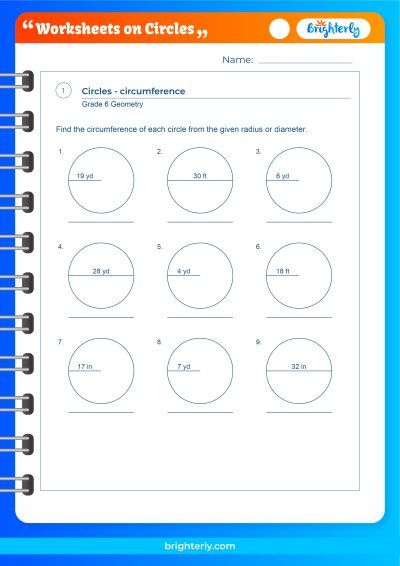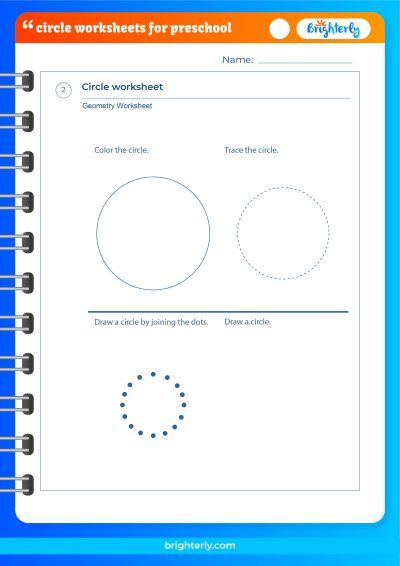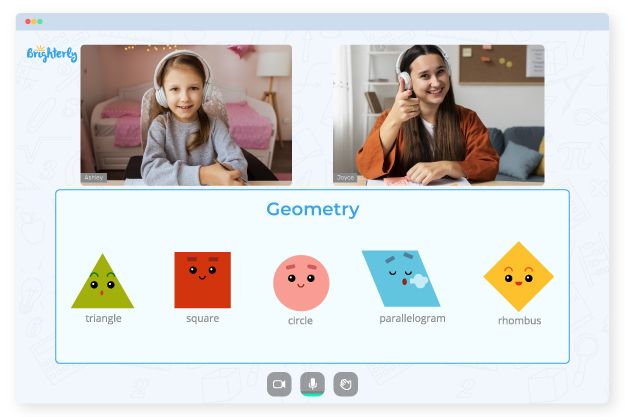Circle – Definition, Parts, Examples
Updated on January 2, 2024
A circle is a captivating and fundamental shape in geometry and mathematics that sparks children’s curiosity and imagination. At Brighterly, we believe in nurturing young minds by exploring the world of circles in a fun and engaging way. In this article, we’ll take a fascinating journey into the realm of circles, uncovering their properties, characteristics, and intriguing connections to the world around us. So, let’s embark on this captivating circular adventure with Brighterly!
Introduction to Circles
Circles have long been a source of wonder and inspiration, with their perfect symmetry and elegant simplicity. They hold a special place in the world of mathematics, but they’re also an essential part of our daily lives. From the coins in our pockets to the wheels on our bikes, circles surround us in countless ways. At Brighterly, we encourage children to explore the magic of circles by delving into their properties, unraveling their mysteries, and solving intriguing problems that challenge their creativity and critical thinking skills. Together, we’ll discover the exciting world of circles that lies just beneath the surface!
What is a Circle?
A circle is a simple closed shape in Euclidean geometry, consisting of all the points in a plane that are equidistant from a given point called the center. The distance from the center to any point on the circle is called the radius. One of the most famous mathematical constants, π (pi), is the ratio of the circumference (the length of the circle’s boundary) to its diameter (twice the radius). Circles have been studied for thousands of years and have numerous applications in mathematics, physics, engineering, and everyday life.
If you’re looking to improve your understanding of circles and their properties, you might want to check out the math worksheets provided by Brighterly. These worksheets are tailored to help you learn and reinforce your knowledge on this topic.
How to Draw a Circle?
To draw a perfect circle, you can use a compass, a simple tool with two arms connected by a hinge. One arm has a point to anchor the compass at the circle’s center, and the other arm holds a pencil or pen to draw the circumference. You can also draw approximate circles using circular objects as templates, such as lids, cans, or spools. Additionally, digital drawing tools and software often include a circle drawing function.
Properties of a Circle
Circles have several unique properties that make them an essential topic in mathematics:
- The circumference (C) is the total length of the circle’s boundary. It can be calculated using the formula C = 2πr, where r is the radius.
- The diameter (d) is the longest distance across the circle, passing through the center. It’s twice the length of the radius (d = 2r).
- The area (A) of a circle is the amount of space enclosed by the circumference. The formula for the area is A = πr².
- All the radii of a circle are equal in length.
- The arc is a portion of the circumference. The length of an arc is proportional to the central angle it subtends.
- A chord is a straight line segment connecting any two points on the circle’s boundary.
- The tangent is a straight line that touches the circle at exactly one point without crossing it. The tangent is always perpendicular to the radius at the point of contact.
Interior and Exterior of a Circle
The interior of a circle refers to the area enclosed by the circumference, while the exterior refers to the area outside the circumference. The circle’s boundary, or the circumference, separates the interior and exterior.
Semicircle:
A semicircle is half of a circle, formed by cutting a circle along a diameter. The area of a semicircle is half the area of the full circle, and its arc length (the curved part of the boundary) is half the circumference.
Quarter Circle:
A quarter circle is one-fourth of a circle, created by cutting a circle along two perpendicular diameters that intersect at the center. The area of a quarter circle is one-fourth the area of the complete circle, and its arc length is one-fourth the circumference.
Parts of a Circle
A circle has several components, including:
- Center: The fixed point equidistant from all points on the circle.
- Radius: The distance from the center to any point on the circle.
- Diameter: A straight line segment that passes through the center, connecting two points on the circle.
- Circumference: The total length of the circle’s boundary.
- Arc: A portion of the circumference.
- Chord: A straight line segment connecting any two points on the circle.
- Sector: A region bounded by two radii and the arc between them.
- Segment: A region bounded by a chord and the arc between its endpoints.
- Tangent: A straight line that touches the circle at exactly one point without crossing it.
Solved Examples on Circle
Let’s look at some examples to help illustrate circle concepts:
Example 1: Find the circumference and area of a circle with a radius of 5 cm.
Solution: Circumference (C) = 2πr = 2π(5 cm) ≈ 31.42 cm Area (A) = πr² = π(5 cm)² ≈ 78.54 cm²
Example 2: Determine the length of a chord in a circle with a radius of 10 cm, given that the chord is 8 cm from the center.
Solution: We can use the Pythagorean theorem on the right triangle formed by the radius, the chord’s perpendicular bisector, and half the chord. Let half the chord be x cm. Then, x² + 8² = 10². x² = 100 – 64 = 36 x = 6 cm Chord length = 2x = 2(6 cm) = 12 cm.
Practice Problems On Circle
- Calculate the area of a circle with a diameter of 14 cm.
- Find the length of an arc that subtends a central angle of 60° in a circle with a radius of 8 cm.
- Determine the area of a sector with a central angle of 90° in a circle with a diameter of 12 cm.
Conclusion
Circles are an essential and mesmerizing part of geometry, with numerous applications in mathematics and other fields. By understanding their properties and components, children can build a robust foundation in geometry, paving the way for more advanced topics as they grow older. At Brighterly, we’re passionate about nurturing young minds and providing them with the tools and knowledge they need to succeed.
Through our engaging and interactive approach, we aim to ignite a lifelong love for learning and a deeper appreciation for the beauty and wonder of circles. As children continue their journey with Brighterly, they’ll carry with them the valuable lessons and skills they’ve acquired, applying them not only to their academic pursuits but also to their everyday lives. Together, let’s create a brighter future by embracing the magic of circles and the endless possibilities they offer!
Frequently Asked Questions on Circles
What is the difference between a circle and a sphere?
A circle is a two-dimensional shape, while a sphere is a three-dimensional object. A circle is a set of points in a plane that are equidistant from a center point, creating a flat, closed curve. On the other hand, a sphere is a set of points in three-dimensional space that are equidistant from a center point, forming a solid, ball-like shape. While circles are studied in plane geometry, spheres are examined in the context of solid geometry.
How can I find the radius if I only know the area of a circle?
If you know the area of a circle (A) and wish to find its radius (r), you can use the formula for the area of a circle: A = πr². Rearrange the formula to solve for the radius: r = √(A/π). By plugging in the given area value and dividing by π, you can then calculate the square root of the result to determine the radius.
Can a circle have more than one center?
No, a circle can have only one center. The center is the unique point equidistant from all points on the circle. By definition, a circle is a collection of points in a plane that are at the same distance from a single fixed point, which we call the center. If a circle had more than one center, it would not be a circle as per the standard definition.
Are all circles similar?
Yes, all circles are similar because their corresponding angles are congruent, and their corresponding sides (radii) are proportional. In the case of circles, similarity is a straightforward concept. Since all circles have the same shape, just differing in size, their angles are congruent, and their radii are proportional based on their respective scales. This property allows us to apply similar problem-solving techniques and geometric transformations to circles, regardless of their size.






